Cardinal Sean O’Malley offered holy Mass at the Cathedral of the Holy Cross on Palm Sunday, March 24, 2013 at 11:30.
Below is the text of Cardinal Sean’s homily. Â All photos were taken by George Martell and a broader set of photos are available at www.BostonCatholicPhotos.com.
Cardinal Sean O’Malley, OFM Cap.
Archbishop of Boston
Cathedral of the Holy Cross
Palm Sunday – March 24, 2013
As a child, I remember my Nana talking about the Great Atlantic and Pacific Tea Company, which turned out to be the A&P Supermarket.
Our parish priest sometimes talked about A&P Catholics. I thought he meant people that shopped at the A&P supermarkets; actually, he meant “Ashes & Palms†Catholics. These are the Catholics that come to Church on Ash Wednesday and Palm Sunday. It occurs to me that some of you might be A&P Catholics, but even if you are, I am so happy that you are here. I want to ask you to join our frequent flier program – every Sunday, the rewards are out of this world, and we promise you an upgrade!
Actually, we are all A&P Catholics, all touched by these powerful symbols.
Here, gathered at the altar, we are Christ’s family. It’s not about being entertained, but about entertaining angels. Here, like at our Thanksgiving Day meal, we discover our identity as members of this family. The Word of God, the Bread of Life, and the witness of our brothers and sisters in the Body of Christ, the Church.
The ashes and palms are important symbols for us Catholics. The ashes on our forehead as we begin the 40 days of Lent are a sign of our mortality, that we are pilgrims, that life, the time we have here, is precious and we must use it well. The ashes are given in the sign of the cross, because although we are dust, as the words of Genesis remind us, the dust has been redeemed. The ashes are a sign of conversion, the need to grow in the faith and overcome our selfishness, sinfulness and learn to love God and neighbor.
An important part of our conversion is the discovery that we are all loved by God. We are not orphans, free agents, or lone rangers. God loves us even when we are in sin like the Father of the Prodigal Son, who loved his son even when he left home.
Palm Sunday means Lent is drawing to a close, and Holy Week is beginning. Today’s first Gospel describes the triumphal entrance of Jesus into Jerusalem. St. Luke organizes his whole Gospel around a trip, Jesus’ pilgrimage to Jerusalem. The goal of Jesus’ life on earth is to go to Jerusalem, and there to die on a cross to pay for our sins, simply because He loves us.
Jesus’ entrance into the Holy City is marked by enthusiasm and joy. The people wave palm branches and pave the street before Jesus with their cloaks, St. Luke in today’s Gospel tells us that as Jesus approached the Mount of Olives, “the whole multitude of His disciples began to praise God aloud with joy for all the mighty deeds they had seen. They proclaimed “Blessed is the King who comes in the name of the Lord. Peace in heaven, glory in the highest.â€
The Pharisees were unhappy with all this and said to Jesus, “Teacher, rebuke your disciples.†Jesus told them that if the disciples were to keep silence, the very stones would cry out. Palm Sunday offers us a glimpse of Jesus’ glory that places Him above all creation. Even the stones will praise him. There are stones everywhere in the Holy Land.
That phrase, “the stones would cry out,†always captures my imagination. This Gospel as mentioned takes place as Jesus passes by the Mount of Olives. The Jews believed that the Last Judgment will take place there in the Kidron Valley. For that reason, Jewish people have wanted to be buried there. Visiting the Mount of Olives, you see so many graves, all covered with little stones. When a Jew visits a grave, he places a stone or a pebble on the tombstone.
In the last scene on Spielberg’s film, Schindler’s List, the Jews saved by Oskar Schindler are filing by his grave on the Mount of Olives, each placing a small stone on it. They put the stones to create the shape of the cross.
Those are the same stones that Jesus knew would cry out Hosanna and which glorify the humble Messiah entering the Holy City on a donkey.
These could also have been the stones that St. Paul before his conversion along with his confederates may have used to stone to death the holy deacon, Stephen, the first martyr of the Church.
The human heart is even more fickle than those stones on the road by the Mount of Olives. For the same people who shouted, “Hosanna, long live Jesus our King,†five days later were shouting, “Crucify Him. We have no king but Caesar!â€
In these Gospels, we see the costly grace of discipleship in the face of persecution and the Cross. We see a huge throng of fair-weather friends who joyfully celebrate the triumphal entrance of their king, but dump him a few days later because of expediency or fear of Christ’s enemies who call for Jesus’ death.
There were also some who joyfully accompanied Jesus on Palm Sunday like the Apostles who, filled with shame and fear, fled for their lives. Among them was Simon Peter, the first Pope. We heard in today’s Gospel how Jesus predicted that Peter would deny Him. Peter was so sure of himself, he replied, “Lord, I am prepared to go to prison and to die with you.â€
Jesus told Peter that He was praying for Peter so that his faith would not fail, and so that once Peter recovered from his fall that he would strengthen his brethren.
This is one of the principal tasks of Peter’s ministry: to strengthen our faith, and to unite us in one body, one family.
The Gospel accounts do not try to disguise St. Peter’s humanity and his shortcomings. When Jesus first called him to be an Apostle, after the miraculous catch of fishes, Peter threw himself at Jesus’ feet and said, “Lord, depart from me, for I am a sinful man.†Jesus does not depart from this simple and sinful man, but chooses him to be the head of his Church.
I am enthralled by Peter’s humanity. He is a combination of Ralph Kramden and Archie Bunker. Even today’s Gospel reminds us of his shortcomings.
Having boasted that he was prepared to go to prison and even death for Jesus, Peter eventually denies even knowing Jesus – and not to a soldier with a long knife, but to a waitress with an attitude. Today’s Gospel shows us that same vacillations between reckless abandon and sheer cowardice that evidenced itself when Peter jumped out of the boat to walk on the water toward Jesus, lost his nerve and began to sink in the waves.
In Luke’s Passion, when Judas and the soldiers arrive at Gethsemane to arrest Jesus, Peter brandishes his machete to defend Jesus and chop off a servant’s ear. Peter wasn’t even a good aim. And he runs and he hides. He then tries to follow Jesus at a safe distance. We can follow Him only up close. Peter wept because of his cowardice and learned to follow Jesus up close. Peter ended up in Rome, the capital of the world, and there on Vatican Hill, he was crucified in Nero’s Circus, upside down. Peter asked to be crucified upside down because he was unworthy to die like Christ, his Master.
Peter is buried under the high altar of St. Peter’s Basilica in Rome, but his ministry continues. The keys that St. Peter received form Christ are passed on to a new fisherman.
That is what the whole world was watching when the white smoke issued forth from Sistine Chapel. The keys of spiritual authority that Christ gave to Peter have been passed to a new Peter, an Argentine Jesuit who has taken the name Pope Francis and has captured the imagination of the world. He is not the Christ. He is the fisherman, like Peter he will have his liabilities and shortcomings, but like Peter he is the Vicar of Christ and has come to confirm us in our faith and lead God’s people in the path of faithful discipleship.
The last 150 years have brought the Church some extraordinary Popes. Each one is different from the one before him. The Italians have a proverb they say: “After a fat Pope, a thin Pope.†Our new Pope has chosen the name Francis. I am, of course, delighted. It is very exciting that this new name suggests some very important themes for the new Pope’s ministry. St. Francis received a call to rebuild the Church in a moment of crisis. St. Francis was a peacemaker, a bridge-builder. When other Christians were fighting the Muslims, and fighting the Crusades, Francis walked into the Sultan’s camp and joyfully announced the Gospel. Francis had such a profound sense of God’s Fatherhood that he saw himself as a brother to every human being and even a brother to Creation, which Francis addressed in terms of “Brother Sun†and “Sister Moon.â€
Francis had a love for the poor. He marks his conversion from the moment he encountered a leper. Francis’ first impulse was to run, but God’s grace changed Francis’ heart and he rushed over to kiss the leper. For Francis, the poor person, the sick, outcast, were all a sacrament, a sign of the crucified Christ. They are as Mother Teresa used to say about the poor: Christ in a distressing disguise. Our new Holy Father is an eloquent exponent of the Church’s social Gospel and will help all of us to refocus on our mission to serve the poor, the sick and the abandoned.
Pope Francis comes from Latin America, where almost half of the world’s Catholics reside. Indeed, almost half of the Catholics in the United States are Hispanic. I am confident that God in His providence has given us an Hispanic Pope for a purpose.
This Year of Faith is going to be a time of surprises. The images of the Conclave and the Mass of Inauguration should remind us that we are a world-wide family, over a billion strong. We have a mission to make God’s Kingdom more present, to build a civilization of love, where the Gospel is preached to the poor and to all.
To follow Jesus up close is not easy. The world will ridicule us and try to trivialize our faith. We must not be surprised.
We began our Lenten Season with ashes on our foreheads and now we draw near Jerusalem, Holy Week, with palms in our hands. Look at the stained-glass windows. Many of our brothers and sisters depicted there are ashes and palms Catholics. The ashes of repentance and the palm is for victory. In our iconography, when a saint is a martyr, he or she is depicted carrying a palm branch of victory. The word martyr is the Greek word for witness. We are all called to be witnesses for our faith, willing to suffer inconvenience, embarrassment, or event persecution to stand up and be counted as one of Jesus’ disciples, brave enough to follow him up close.
Today is an emotional day, the anniversary of the murder of a man whose friendship I cherished, and whose life fills me with admiration. On March 24, 1980, while celebrating the Mass at the Catholic Hospital “La Divina Providenca†Monsignor Oscar Romero, Archbishop of San Salvador, was murdered, one day after a sermon broadcast throughout the whole country in which he called on Salvadoran soldiers, as Christians, to obey God’s laws and stop carrying out the government’s brutal repression.
Archbishop Romero’s funeral was held at the Cathedral on Palm Sunday – the largest event in the history of that country. The Army opened fire on the crowd. 40 people died, many were injured in the panic that ensued. When the plaza emptied and the smoke lifted, all you could see was shoes and sandals that fell off people’s feet as they fled and stepped on each other’s feet. Shoes, sandals and palm branches.
Let us carry these palm branches with the courage and the joy of those who have gone before us in our 2000 year history of our Church, built by Christ of living stones on the Rock of Peter.
Another wonderful symbol of this great feast of Palm Sunday is that the palms blessed here today will be burned to make the ashes for next Ash Wednesday. We are always on a journey, struggling like Peter, with our own weakness, often having to start all over again on the journey toward Jerusalem. But we are not alone; we are surrounded by a cloud of witnesses waving the palm branch of victory.
In this Holy Week, we shall relive the great events of Jesus’ last supper, where he gives us the gift of Himself in the Eucharist. We relive the sacrifice of Calvary, where Jesus saves us from sin and death, and finally the joy of Easter, the most important day of the year. We celebrate Jesus’ victory over death. Our Redeemer lives and we can live forever in His love.
This is the Year of Faith. Let us recommit ourselves as Christ’s disciples, let us learn more about our Catholic Faith, so that we can live it more generously, more faithfully, more joyfully – and so that we can be witnesses, inviters, evangelizers, sharing the treasure with those who do not yet know Christ, so that others will discover the joy of being part of Christ’s motley family, the Church, with ashes on our foreheads and palm branches in our hands.


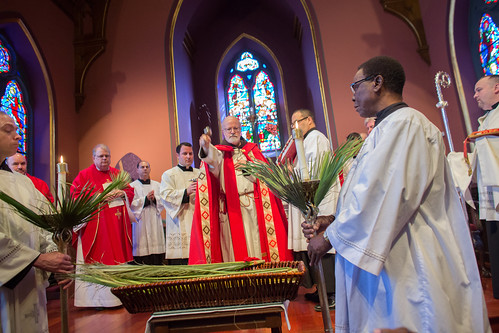
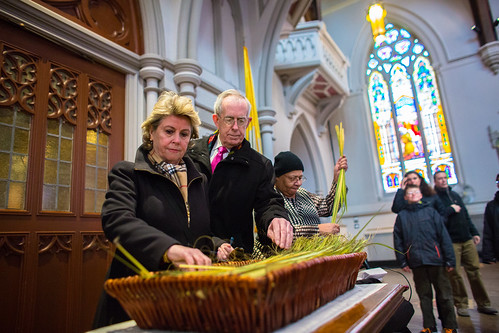
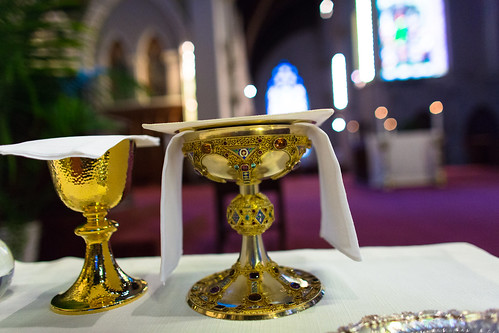



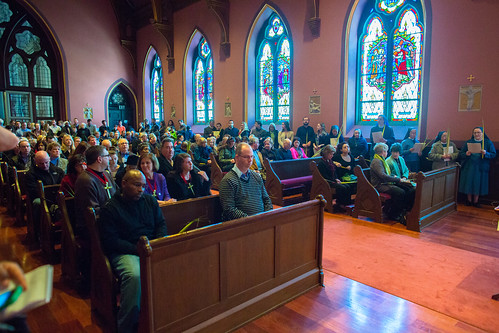
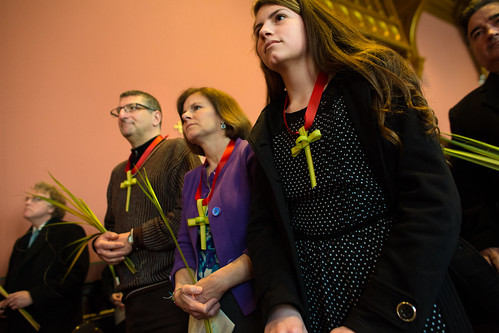
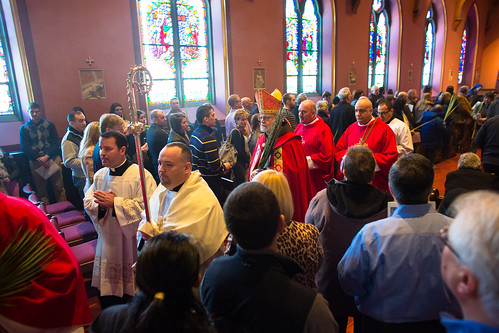
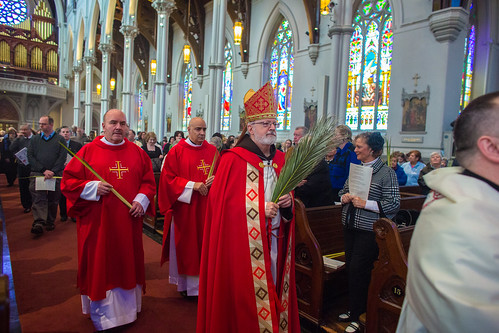
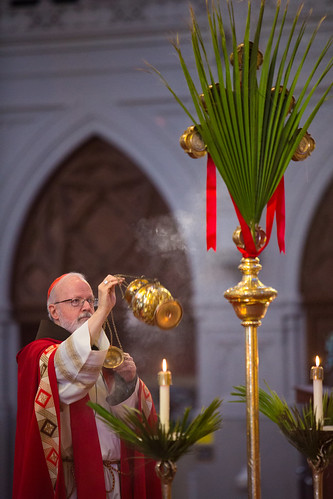
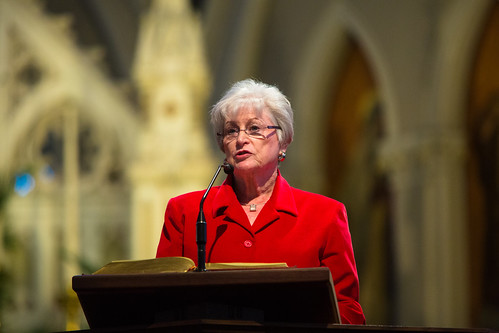
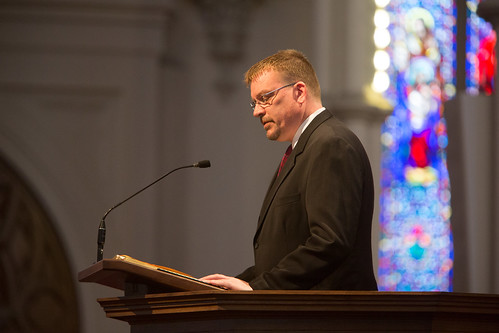
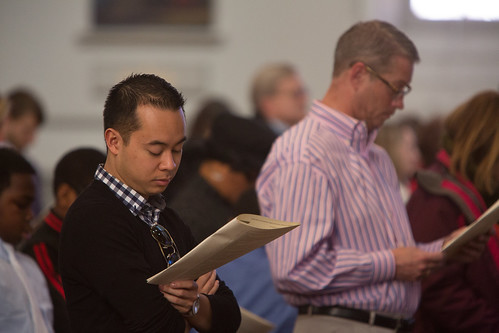

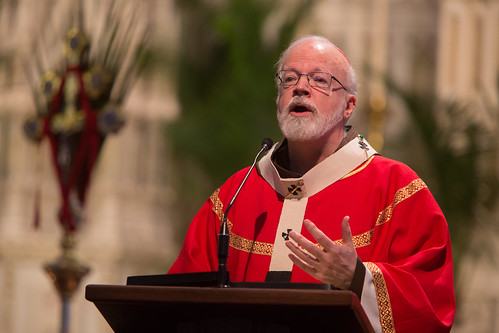
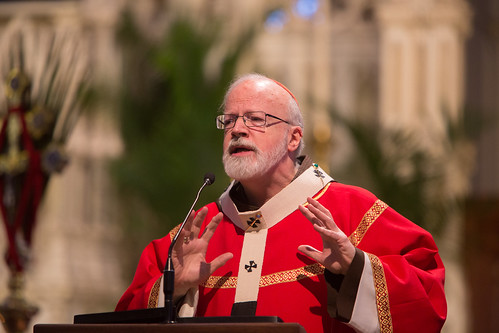

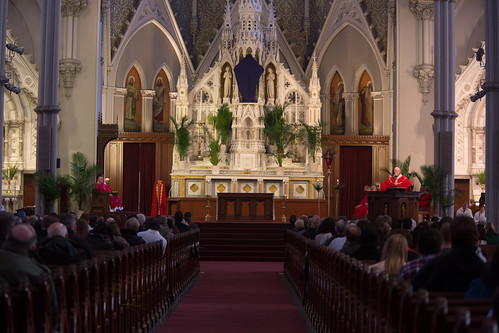
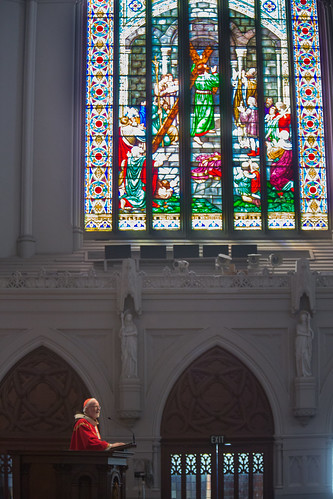

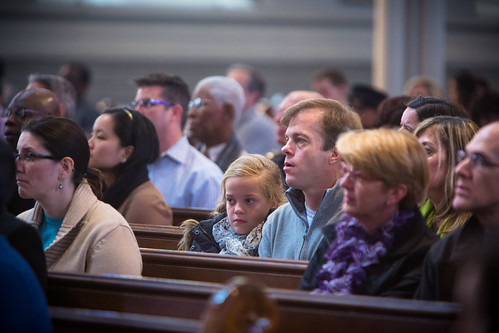
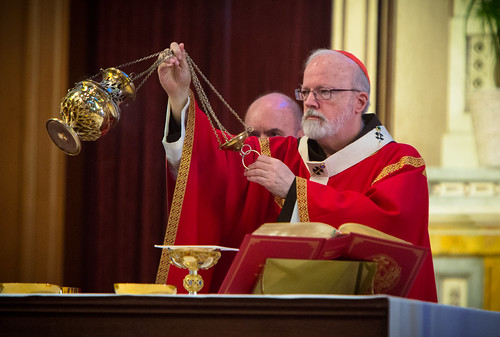
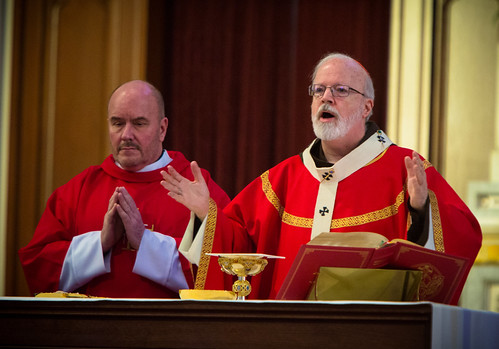
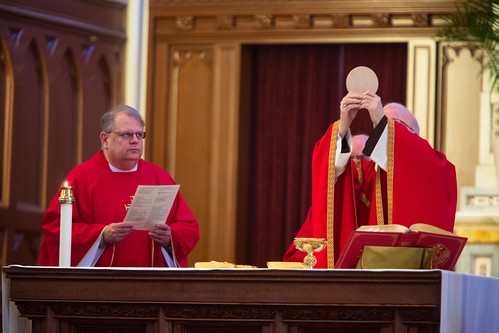

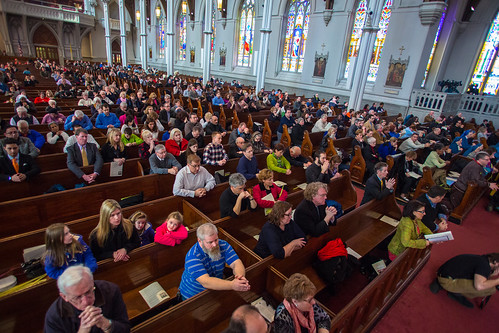
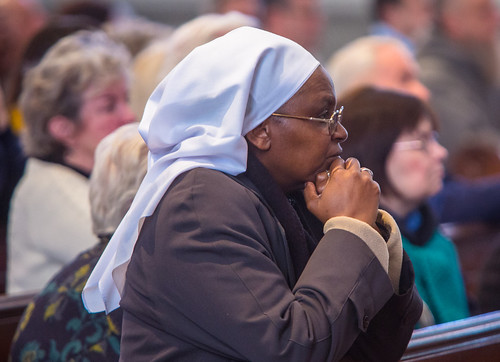
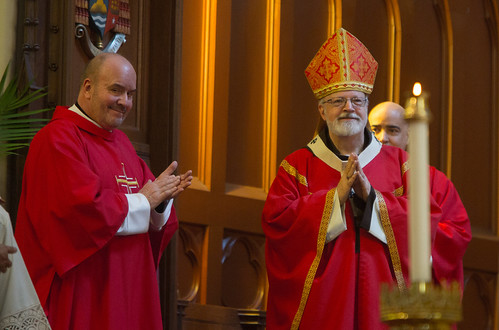
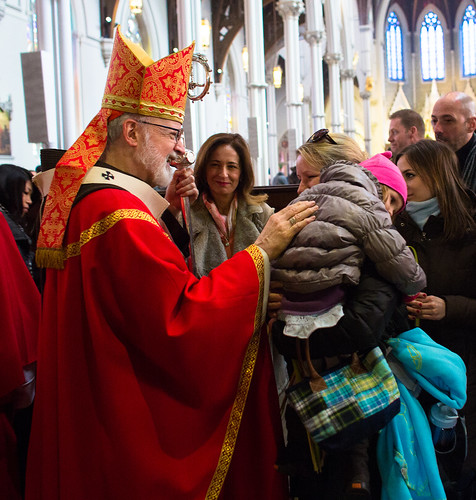

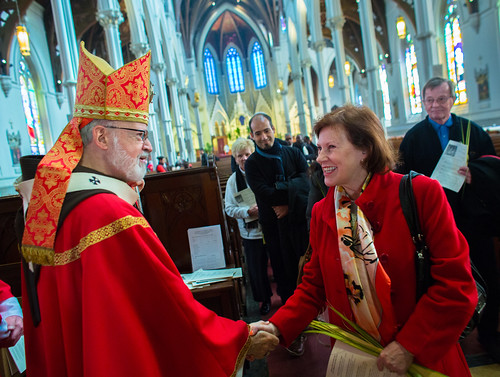
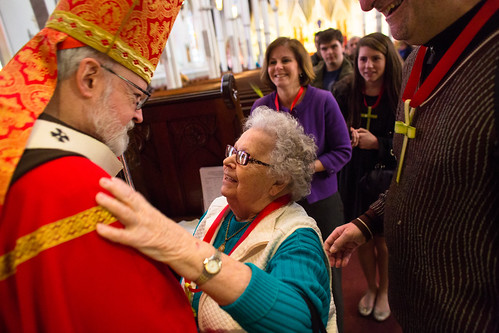

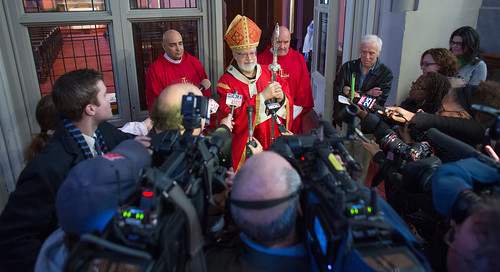
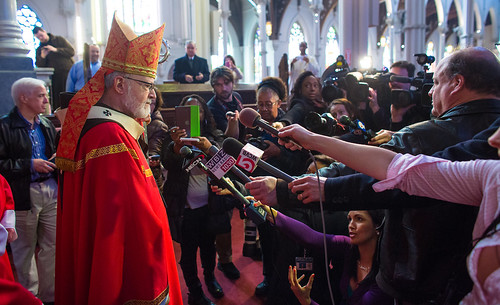
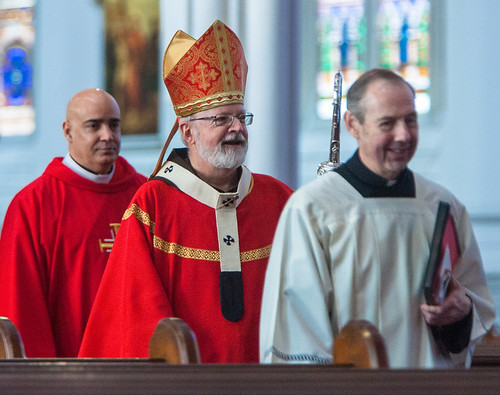
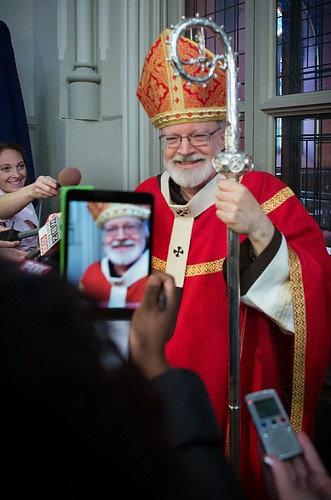

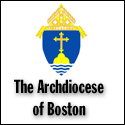



Comments Closed
Trackbacks/Pingbacks
[…] Cardinal Seán’s Palm Sunday homily […]